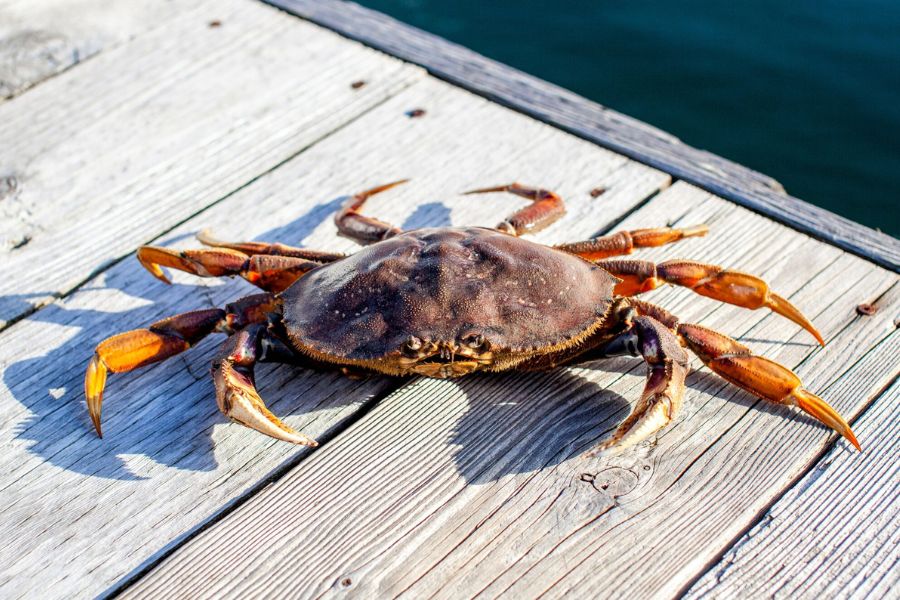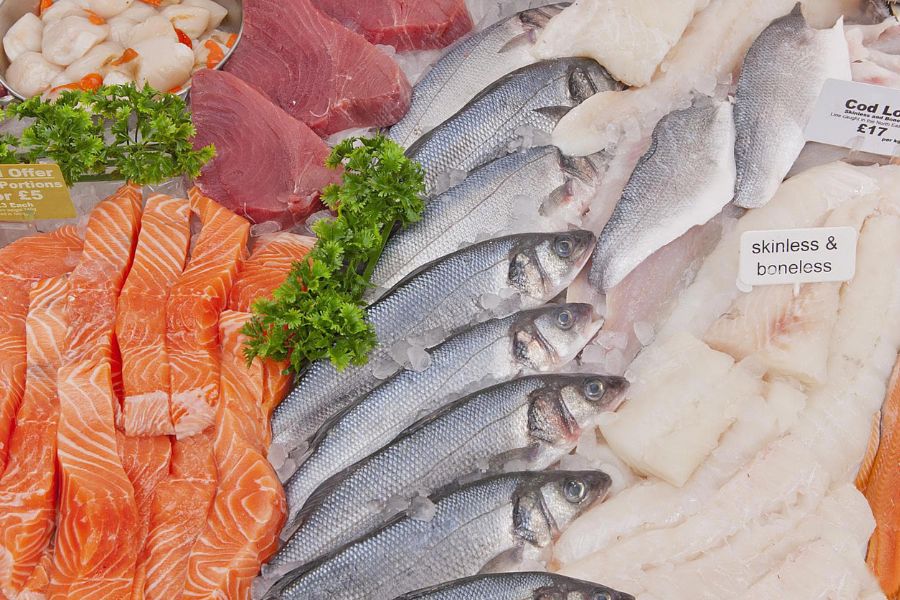One of the world’s biggest mysteries is the ocean and its contents. Seafood comes in a variety of species, sizes, and shapes, which is no surprise given that seafood is defined as any sea life that we consider edible.
While it is widely recognized that fish is a high-protein, low-fat food with health advantages, some features of our seafood remain unknown. So when someone claims they don’t enjoy seafood, it is a shock. How could they possibly know if all they’ve ever eaten is a piece of fish or two oysters?
There’s a lot more to seafood than just that. Don’t worry, if you don’t recognize crustaceans from molluscs or the difference between a shrimp and a prawn – we’re here to serve up some amazing tidbits about seafood!
12 Fun Facts About Seafood You Didn’t Know
1. People have been eating fish for over 165,000 years

We lived mostly as hunter-gatherers in the early days of humanity, constantly moving in quest of better hunting grounds or more plentiful crops. Seafood was one of the foods that our forefathers ate frequently. Indeed, it’s probable that the earliest tribes to live more fixed lives were those that lived near the sea and had a steady supply of seafood. At the site, which dates back 165,000 years, collections of empty shells were discovered.
2. Omega-3 is abundant in fat-rich seafood including salmon, mackerel, and sardines

If it doesn’t mean anything to you, it’s likely because you’re unaware of how beneficial omega-3 is to your health. While all fats were once thought to be unhealthy, some, such as omega-3 are really beneficial. Reduced risk of heart attacks, strokes, and arthritis symptoms are just a few of the advantages of eating omega-3-rich seafood. It’s supplementation has even been shown to slow the deterioration of your eyesight as you age as well as improve your night vision!
3. Shrimp aren’t just tiny versions of prawns

First and foremost, they’re both crustaceans with ten legs, but that’s about it for the similarities. Shrimp can exist in both fresh and saltwater, whereas prawns are exclusively found in freshwater. Shrimp and prawns have diverse bodies as well. Prawns, for example, have three claw sets, but shrimp only have two. Prawns are larger than shrimp, especially in colder waters, while shrimp grow to much smaller sizes.
Did you know oysters have the ability to change their gender? According to research, all oysters will do this at least once in their lives.
4. Seafood that is certified organic does not exist

To be organic, the food must be free of artificial chemicals such as fertilizers and pesticides. A regulating organization that sets distinct rules to ensure that everything is chemical-free is required for food to be certified organic; however, this does not rule out the possibility of companies claiming to sell organic mussels. Instead, it implies that there is no way to know if something is biological or not!
5. Lobster was once considered a low-class delicacy

Lobsters are now considered fine food and are offered in expensive restaurants. Crustaceans haven’t always been considered exquisite food; the lobster was a common food source for the poor throughout colonial times. Because they were cheap and abundant, they were consumed by prisoners and the poor.
6. An Ahi tuna can weigh up to 300 pounds

Yellowfin tuna, often known as Ahi tuna, is one of the largest tuna species. They weigh roughly 125 pounds on average but can weigh up to 300 pounds. Hawaiian waters are home to the world’s largest Ahi tunas. The International Game Fish Association once caught a 388-pound Ahi tuna!
Read also – 15 Unconventional Career Options
7. The original term for Mahi Mahi was dolphinfish

Mahi Mahi is a popular sport fish because of its firm, delicious white meat. The name means “strong-strong” in Hawaiian. These fish were originally known as dolphinfish because they tend to swim along the side of boats in the same way as dolphins do. They are not related to dolphins, despite their name.
8. Crabs can survive where other seafood can’t

Crabs can survive in some of the world’s most extreme conditions. Many other sea species are unable to survive in their environment. Crabs have been discovered thousands of feet below sea level, surrounding volcanic vents, and under the ice in Antarctica.
9. Plants can also be found in seafood

Although this is a contentious point of view, it has been suggested that several types of sea vegetation can be considered to be seafood. Some forms, such as the seaweed in our sushi, have been on our menus for a long time. Other types of seaweed are extremely nutritious and have been consumed for thousands of years by some societies.
10. Oysters have the ability to change gender at any time

They start off as males but are born with both the male and female reproductive organs. They can fertilize their own eggs without requiring the assistance of another oyster. All oysters, it has been discovered, will change gender at least once throughout their lives.
11. Keep an eye on your mercury levels

While swordfish, shark, tilefish, and king mackerel are known to contain mercury which can harm the central nervous system, the average person will not get mercury poisoning from eating recommended amounts of commercially sold seafood (seafood sold in restaurants and supermarkets), according to Rima Kleiner, a nutritionist.
12. Learn how to eat seafood

If you have bought seafood at the store and detected a tiny fishy odor, it’s normal. The only thing you’ve to do is rinse the seafood under cold water and pat it dry. If the fish has a strong odor, such as ammonia, discard it right away. Always check the delivery schedule at your local market to ensure there is enough turnover.
CONCLUSION
Sea cuisine is easy to fall in love with because it is delicious, nutritious, and simple to cook. Those who enjoy seafood and fish are in for a treat. You’ll dive right back into the delicious delicacy of fresh, juicy, and grilled to perfection seafood with dishes like beer-battered cod, fish tacos, and even albacore tuna salad.
Read also – 11 Fun Facts About Fiji